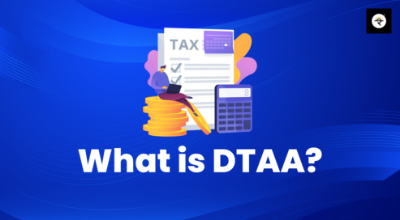What is DTAA?
Often, income that originates in India is taxed within the country. However, Non-Residents of India, who are residents of another country, may find that the same income is taxed again in their country of residence, resulting in double taxation. To prevent this, India has established Double Taxation Avoidance Agreements (DTAA) with over 90 countries. These agreements aim to ensure that income is taxed only once, specifying how, where, and at what rate the income will be taxed. The primary purpose of DTAA is to provide clear guidelines on taxation, avoiding the burden of double taxation on the same income.
What are the ‘tie-breaker’ rules?
Like any other tax law, the DTAA also places a major emphasis on the residential status of a person. Generally, all the DTAA mentions their scope as – This agreement shall apply to the residents of one or both the countries. However, to claim the benefit of DTAA, you must be a resident of one country and the income should be generated in the other country. So basically, you cannot be a resident in both the countries. Now generally the DTAA follows the residential classification of the respective country. Say for example, as per the respective laws you are a resident in USA and a Non-Resident in India, then it becomes a very easy for the further process. However, if by definition of the local laws you have a residential status in both the countries then what? Here comes the ‘tie-breaker’ rules of DTAA. You can consider this as a super over or a penalty shootout arranged by DTAA to decide the final winner (which country can claim you as a resident). Let’s understand how this game is played:
If there is a situation where an individual is resident of both the countries, then the residential status will be determined as follows:
- The individual will be resident in the country where he has a permanent home available. In case he has permanent home in both the countries, he will be deemed to be resident of the country with which his personal and economic relations are closer (centre of vital interests).
- If the country where he has his main interests can't be determined, or if he doesn't have a permanent home in either country, he will be considered a resident of the country where he has a regular place to stay.
- If he has a regular place to stay in both countries or in neither, he will be considered a resident of the country of which he is a national.
- If he is a national of both countries or neither, the authorities of the contracting countries will resolve the issue by mutual agreement.
(Ok this is really too much. In this case let the competent authorities take charge)
(Please note that these are general tie-breaker rules, and specific DTAAs between countries may have differing provisions. This information is provided for conceptual understanding only and should not be considered professional advice.)
What are the documents required and the procedure to claim benefit of DTAA in India?
An individual will need the following documents/details:
- PAN card, if available
- Proof of residential address in your residential country
- Duration of residential status as stated in the TRC (Tax Residency Certificate, this is issued by the local tax authorities)
- Taxpayer status (Individual in our case)
- Proof of nationality
- TIN or any other unique tax identification number in country of residence
- Digital Signature Certificate, if available or a functioning Indian mobile number
Now the second question, how to claim the benefit. You can claim the benefit of DTAA in two ways: at the time of withholding tax or when filing your income tax return (ITR).
- At Withholding of tax:
- Claiming the benefit at the time of withholding taxes prevents extra tax from being withheld, avoiding working capital blockage.
- You must file Form 10F with the Indian tax department, which can be done online.
- Submit Form 10F to the tax deductor, who will then apply the DTAA tax rates instead of regular Indian tax rates.
- At Income Tax Return (ITR) filing:
- Indian tax laws allow you to choose the more beneficial tax rate between regular laws and DTAA rates.
- Compare the tax rates and choose the beneficial one when filing your ITR.
- If you missed claiming the DTAA benefit at the time of withholding taxes, you can get a refund of the extra tax withheld when you file your ITR.
(These steps provide a general understanding of the DTAA claim process, but specific requirements and procedures may vary. It is advisable to consult a professional for detailed guidance.)


